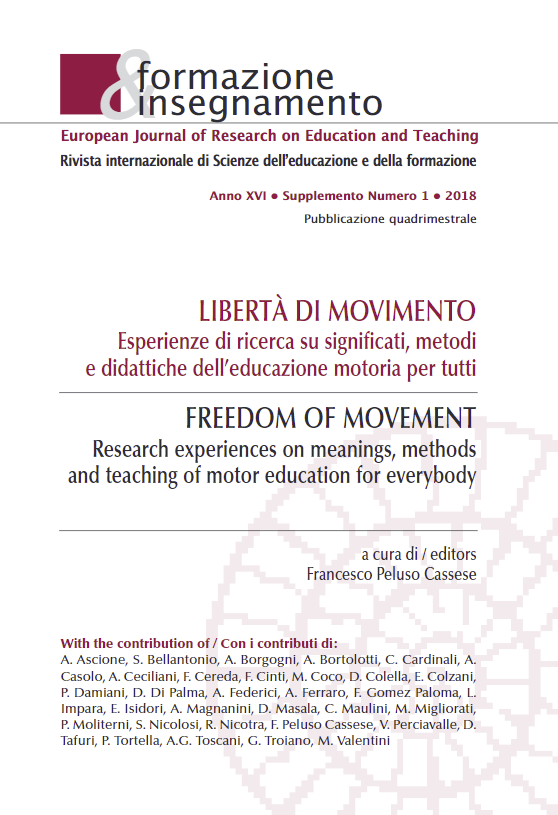Physical Literacy and Teaching Styles. Re-orienting physical education at school
Abstract
Physical education in the curriculum of primary and secondary school is an
inescapable component of the educational process of the child and the
young. The contribution of physical education and of motor activities for
the prevention of sedentary habits and the development of learning
processes is amply highlighted in the literature. Physical literacy (PL), is a
process of acquisition and development of motor competencies, through
which the person expresses his motor repertoire, his motivations and perceptions
of competence, interacts in the socio-cultural context. The following
article aims to study the PL process, to promote the learning of motor
competencies through integrated teaching styles. It highlights the need to
re-orientate school interventions to promote health, through motor and
sports activities, analyzing the impact of teaching styles for the cognitivemotor-
social development of the student. In this sense, the need arises to
experiment with new organizational-didactic modalities, through which to
carry out school motor activities (active school), expanding the interdisciplinary
and transversal values, to promote the development of the quality
of physical education with a constant reference to didactic intentionality.
Downloads
Published
How to Cite
Issue
Section
License
Copyright (c) 2018 Dario Colella

This work is licensed under a Creative Commons Attribution 4.0 International License.
Formazione & insegnamento is distributed under Attribution 4.0 International (CC BY 4.0).
For further details, please refer to our Repository & Archiving Policy, as well as our Copyright & Licensing Terms.





